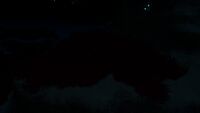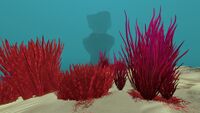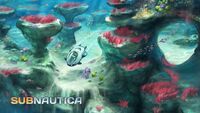Blood Grass: Difference between revisions
GemmaBeepo (talk | contribs) No edit summary Tag: sourceedit |
(Fixed Data Bank Entry Design) Tag: sourceedit |
||
| Line 17: | Line 17: | ||
! class="unsortable" style="width: 100%; text-align: center;" | |
! class="unsortable" style="width: 100%; text-align: center;" | |
||
|- |
|- |
||
| style="text-align:left; font-size:12px;" | |
| style="text-align:left; font-size:12px;" | |
||
A common sea grass adapted to shallow, sandy environments. |
A common sea grass adapted to shallow, sandy environments. |
||
* Likely to grow wherever the ground is too loose or the ocean surface too far for creepvines to take hold |
* Likely to grow wherever the ground is too loose or the ocean surface too far for creepvines to take hold |
||
* Commonly found growing on the crests of dunes and atop raised plateaus for superior access to sunlight |
* Commonly found growing on the crests of dunes and atop raised plateaus for superior access to sunlight |
||
* Distinctive red coloration may be an adaptation to low wavelength light on the seabed, a deterrent against predators, or both |
* Distinctive red coloration may be an adaptation to low wavelength light on the seabed, a deterrent against predators, or both |
||
* Insufficient calories for human consumption |
* Insufficient calories for human consumption |
||
Predators: Reginald, |
Predators: Reginald, spadefish, boomerang |
||
Assessment: Presence supports healthy biodiversity |
Assessment: Presence supports healthy biodiversity |
||
Revision as of 23:51, 23 September 2016
Template:Infobox:Fauna Flora Bloodgrass is a type of flora found exclusively in the Grassy Plateaus, which in turn derives the biome's name from the large, wide-spread patches of Bloodgrass.
Appearance
Bloodgrass consists of a small group of dull red blades of tall grass. They tend to grow close to each other, forming vast patches.
Data Bank Entry
|
A common sea grass adapted to shallow, sandy environments.
Predators: Reginald, spadefish, boomerang Assessment: Presence supports healthy biodiversity |
Gallery
Lua error in package.lua at line 80: module 'Dev:Navbox' not found.




